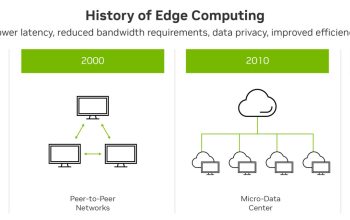Before the advent of the modern internet, computers had existed for decades. But, there was no standardized way for computers to communicate with one another. In 1973, researchers at DARPA and Stanford University began developing a standard protocol called TCP/IP. This protocol was the basis for the modern internet. The two researchers coined the term Internet for the first time in 1974. Now, the history of the internet is one of the most fascinating chapters in history.
The early Internet saw the emergence of email and mailing lists, as well as e-commerce. The Internet’s popularity eventually led to widespread online shopping. Other early applications included online forums, bulletin boards, personal websites, and blogs. Although many of these early applications were static, they were essential for the emergence of social networking sites and online communities. While many early adopters had experience in business, the majority didn’t. Most were just people with ideas and didn’t manage their capital well.
While the development of the modern internet has been accelerated by advances in technology, it is important to remember that the Internet was originally invented in the 1950s. At the time, the Cold War was at its height, and both superpowers possessed deadly nuclear weapons. Because of this, people grew increasingly nervous about the possibility of a long-range surprise attack. The US needed a communications system that would not be affected by a nuclear attack. At the time, computers were expensive, large machines used only by university and military personnel. As time went on, researchers began to become frustrated with their lack of access to technology.
In 1989, Tim Berners-Lee created a new protocol for transmitting data: the HyperText Markup Language (HTML). It’s still the most common protocol on the web today. It was Tim Berners-Lee’s invention that created the world wide web. The Internet was available to the public in 1991. By 1992, audio and video files were distributed over the Internet for the first time. In 1992, the phrase “surfing the web” became popular.
The first internet service provider was established in California. The first Internet-connected computers were connected to NSFNET. In the same year, the National Science Foundation created the National Information Infrastructure (NII), which was designed to connect U.S. classrooms to the Internet. The government also ordered federal agencies to create websites and put their information on the web. In addition to the aforementioned developments, the Internet was upgraded in 1998 with the introduction of the new Internet Protocol version 6, or IPv6. IPv6 introduced a 128-bit address, allowing future growth of Internet Addresses. The next generation IPv6 addresses will be able to accommodate up to 340 trillion unique addresses.
In the early years of the Internet, the majority of the traffic that runs through the Internet is government-funded. The government funded internet, however, had limited capabilities. It was mostly used for government, education, and research purposes. Commercial use was prohibited unless it served some research purpose. However, after the 1990s, this policy was loosened and independent commercial networks began to pop up. The rise of independent commercial networks allowed internet users to bypass the government-funded backbone.




